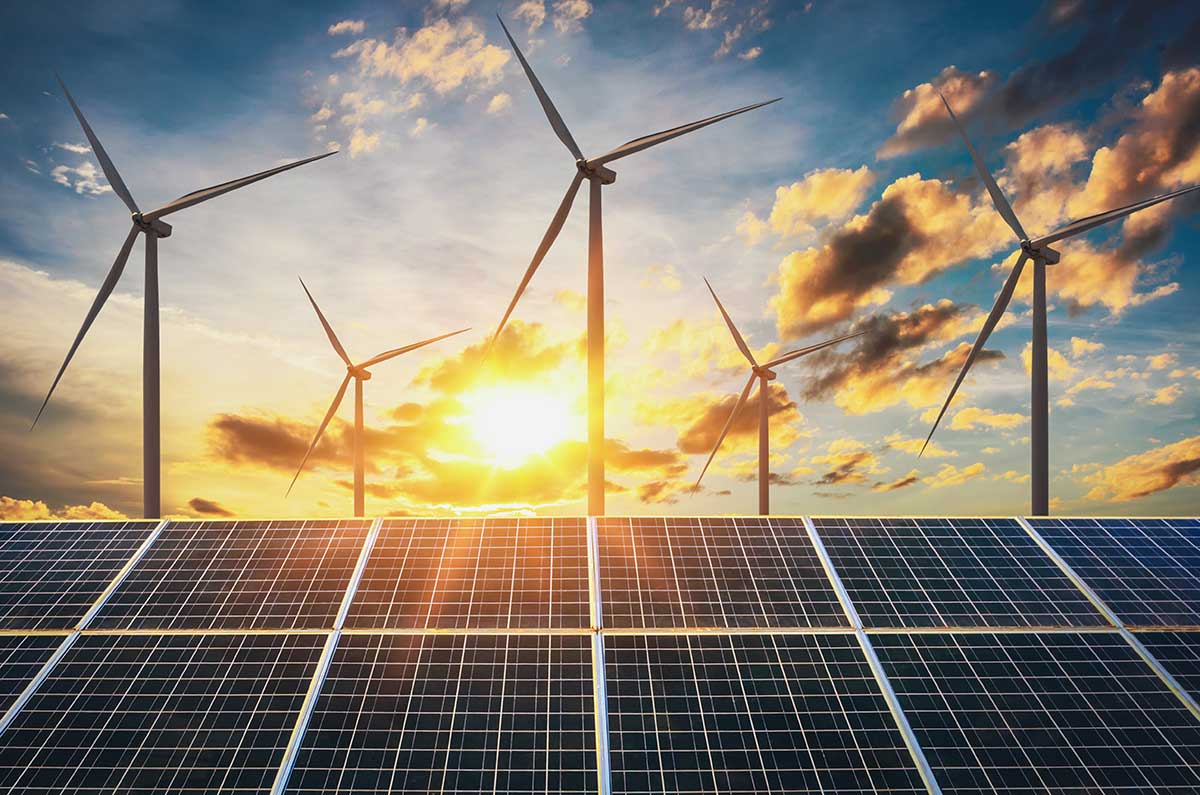
Jul 10, 2025
Blog energy-and-resources Why MENA Is Poised to Lead the Global Renewable Energy Boom
For much of the 20th century, the Middle East and North Africa (MENA) regions were the beating heart of the global oil economy. Nations like Saudi Arabia, the UAE, and Algeria rose to geopolitical prominence by supplying the world with hydrocarbons, fueling global industries and economies. However, as the world shifts toward sustainability and decarbonization, the same region once defined by oil is rewriting its energy legacy—this time, powered by the sun and wind.
Today, the MENA region is undergoing a profound transformation. Driven by the urgency of economic diversification, climate resilience, and energy security, countries across the region are embracing renewable energy with unprecedented speed and ambition.
The renewable energy market in MENA is experiencing remarkable growth. It is valued at approximately USD 26.8 billion in 2024 and is projected to reach nearly USD 59.9 billion by 2030, expanding to a CAGR of 14.4% during the forecast period.
Solar energy dominates the renewable mix due to the region's high solar potential. Meanwhile, wind energy is gaining traction in countries with favorable wind conditions, particularly North Africa. Hydropower, while limited by water scarcity, still contributes in a few select areas.
Economic Diversification and Energy Security
The need to reduce dependence on fossil fuels pushes oil-rich nations like Saudi Arabia, the UAE, and Oman to invest heavily in clean energy. Renewable energy offers both environmental benefits and economic resilience in the face of fluctuating oil prices.
Abundant Renewable Resources
Falling Technology Costs
The cost of solar photovoltaic (PV) modules and wind turbines has decreased dramatically. Solar PV costs have fallen by over 80% since 2010, making renewable energy highly competitive with conventional power.
This report provides an in-depth analysis of the renewable energy market in the Middle East and North Africa (MENA) region, using 2024 as the base year and forecasting trends from 2025 to 2030, with estimations of compound annual growth rates (CAGR).
Ambitious renewable energy targets are a central theme in the national agenda of many MENA countries:
United Arab Emirates (UAE)
The UAE has some of the world’s most significant renewable projects, including the Mohammed bin Rashid Al Maktoum Solar Park, targeting 5 GW by 2030. Abu Dhabi’s Masdar City is a model for sustainable urban development.
Saudi Arabia
Once reliant solely on oil, Saudi Arabia is aggressively pursuing clean energy. Projects like the NEOM Green Hydrogen Project reflect its ambition to lead in green hydrogen and renewables.
Morocco
A trailblazer in renewable energy, Morocco’s Noor Ouarzazate Solar Complex is among the largest in the world. The country is also advancing large-scale wind farms and hydro projects.
Egypt
Egypt is scaling up its wind capacity along the Gulf of Suez and investing heavily in solar energy. Benban Solar Park is one of the largest solar installations globally.
Green Hydrogen
Countries like Oman, Saudi Arabia, and the UAE are investing billions in green hydrogen, leveraging low-cost renewables for export-scale electrolysis.
Cross-Border Power Trade
Infrastructure like the Euro-Africa Interconnector opens pathways for clean electricity exports to Europe and Sub-Saharan Africa.
Public-Private Partnerships (PPP)
Governments encourage private investment through competitive tenders, tax incentives, and favorable regulations. Major players like ACWA Power, Masdar, and EDF Renewables are expanding their footprints.
Despite the promising outlook, the renewable energy transition in MENA faces several obstacles:
The renewable energy market in MENA is no longer a speculative venture; it’s a strategic imperative. As technology matures, costs decline, and policy support strengthens, the region is charting a new course in global energy leadership.
MENA's sunlight-rich deserts and wind-laden coasts uniquely position it to meet domestic needs and power parts of the world through clean energy exports. With an eye on green hydrogen, smart grids, and sustainable urban planning, MENA is poised to transform from an oil epicenter into a global renewable energy powerhouse.
Once defined by oil, the MENA region is now redefining itself through clean energy leadership. With unmatched solar and wind potential, falling technology costs, and bold national strategies, MENA is not only addressing the global call for decarbonization but also positioning itself as a renewable energy powerhouse. As investments in green hydrogen, cross-border energy trade, and sustainable infrastructure gain momentum, the region’s energy future looks increasingly bright, resilient, and globally influential.

Amrita Kumari is a Senior Executive Email Marketer at BCC Research, with a bachelor’s degree in computer applications. She specializes in content creation and email marketing.

As the world accelerates toward clean energy solutions, Solid Oxide Fuel Cells (...

The global market for Solid Oxide Fuel Cells (SOFCs) is experiencing significant...

Electrical switches—devices that control the flow of electricity—are the backbon...

We are your trusted research partner, providing actionable insights and custom consulting across life sciences, advanced materials, and technology. Allow BCC Research to nurture your smartest business decisions today, tomorrow, and beyond.
Contact UsBCC Research provides objective, unbiased measurement and assessment of market opportunities with detailed market research reports. Our experienced industry analysts assess growth opportunities, market sizing, technologies, applications, supply chains and companies with the singular goal of helping you make informed business decisions, free of noise and hype.